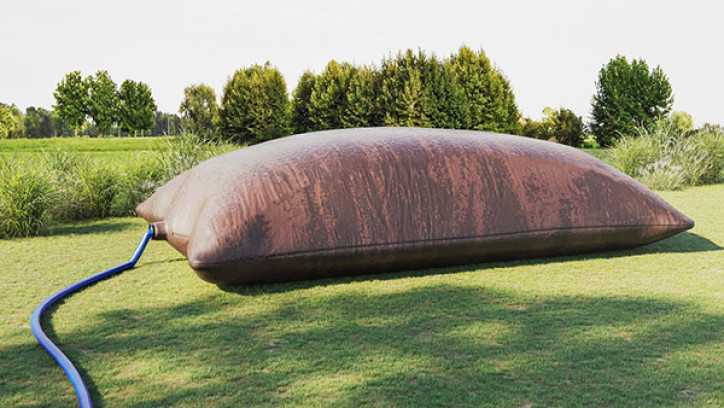11.3 Flexible water storage bladders

Flexible water storage bladders are pillow-shaped tanks or containers used for the storage of water. These bladder tanks are supported directly on the ground, which commonly does not need any form of foundation design as they are flexible and can deform with the ground.
Please note: The below exemption comes into force from 31 August 2020. You will still need a building consent if your project starts before this date.
Flexible water storage bladders are pillow-shaped tanks or containers used for the storage of water. These bladder tanks are supported directly on the ground, which commonly does not need any form of foundation design as they are flexible and can deform with the ground. The friction forces provide lateral stability to water storage bladders (once they are full) and prevent lateral movement. Owners should follow all safety precautions issued by the suppliers/manufacturers to avoid harm.
Note that locating flexible storage bladders on sloped ground is not in accordance with any supplier or manufacturer’s installation instructions.
It is important to consider the geotechnical risks when placing flexible water storage bladders on the ground as this can create an additional surcharge on a relatively large surface area. Sometimes minor site works might be needed to minimise surface irregularities to reduce the chance of abrasion and water bladder failure. Purchasers and owners might need to seek further professional advice if they want to place the flexible water storage bladders on or near sloping ground or not on good ground.
This exemption limits the capacity of flexible storage bladders to no more than 200,000 litres and the height above the ground can be no more than 2 metres. These limits have been set to reduce the potential risks to surrounding property and infrastructure in the event of a failure.
These bladders can be used to store a variety of liquids, some of which, if a leak or discharge occurred, could have a detrimental impact on the environment. This exemption is therefore limited to the storage of water used only for irrigation or firefighting purposes.
Always check with your local council to make sure your proposed building work does not have any district planning implications. A resource consent may be required and it is important that you obtain this before starting any building work.
The connection of a potable water supply pipe to fill a flexible water storage bladder requires a building consent, and would need to be installed by an Authorised Plumber.
What is exempt
- A factory owner wants to install a flexible water storage bladder with a 90,000 litre capacity within their complex to ensure adequate backup water supplies during a fire event. The flexible water storage bladder will be seated on suitable ground with 100 metres clearance from any legal boundaries.
What needs consent
- A homeowner wants to place a flexible water storage bladder in the basement of their house to supply water during emergencies. A building consent is required for this building work because the bladder would be located in the building and is therefore not 100 metres away from the residential building.
- A farmer wants to place a flexible water bladder on their land 25 metres from the boundary. A building consent is required for this building work because the distance from the boundary is less than 100 metres.
- A contractor wants to carry out building work to install a 250,000 litre flexible water storage bladder. A building consent is required because the bladder's capacity exceeds 200,000 litres.
- A property owner wants install a flexible water storage bladder to store potable water for use in an emergency. A building consent is required because the stored water is not solely intended to be used for irrigation or firefighting purposes.
What the law says
23A. Flexible water storage bladders
1. Building work in connection with a flexible water storage bladder that—
(a). is on the ground; and
(b). has an overall height of no more than 2 metres; and
(c). does not exceed 200,000 litres in capacity; and
(d). is at least 100 metres from any residential building or legal boundary; and
(e). is used exclusively for irrigation or firefighting purposes.